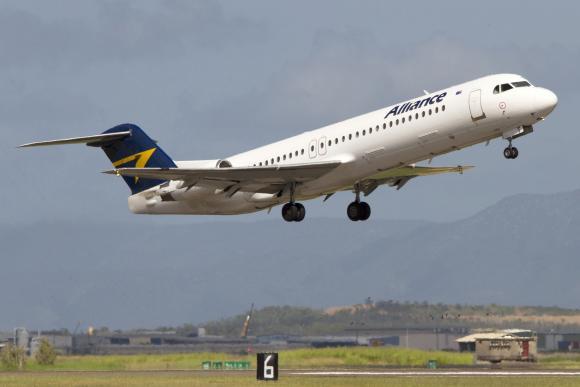While Fokker 100 and Fokker 70 fleets have been dwindling all over the World (see our report on TAP’s last Fokker 100 flight), a small Australian airline can’t get enough of them. Brisbane-based Alliance Airlines is already the World’s largest Fokker 70/100-family operator and it is in the process of expanding the fleet with the addition of second-hand Fokkers from Austrian Airlines.
Why this enthusiasm for the Fokker 100?
“It’s makes total sense from an operational point of view”, explains Lee Schofield, of Alliance Airlines, “it is a very reliable aircraft and, technically speaking, is perfectly suited for the type of environment we operate in”. Alliance Airlines uses its Fokkers some 1,200 hours per year per aircraft, pretty low usage rate compared to European airlines, but, again, their route network and passenger profile is very different. Alliance Airlines specializes in operating flights to remote locations in Australia and Papua New Guinea in support of the mining industry.
“We fly to places that are remote, hot and dusty, the Fokker 100 does really well there, with its high-mounted engines and high reliability. Here in Australia it is the backbone of the so-called “mining-fleet”. You can see how Qantas and Virgin Australia have also been operating the type very successfully.
The availability of a technical support network and spares is not a concern for the time being, as Alliance Airlines is looking to, at least, a 10-year time horizon to continue operating the type.
We have 16 Fokker 100 and 8 Fokker 70s at the moment, and we are getting 21 more from Austrian Airlines, but not all of these will end up on our fleet. We transferred already three of them to Qantas and we will possibly use some others for parts and spares” explained Mr. Schofield yesterday, as the first of ex-Austrian Fokkers arrived in Brisbane.
Views: 61


It appears Alliance has something akin to a monopoly in their line of business. Therefore, higher fuel or maintenance costs don’t really matter, as they can be directly reflected in ticket prices to a captive market.